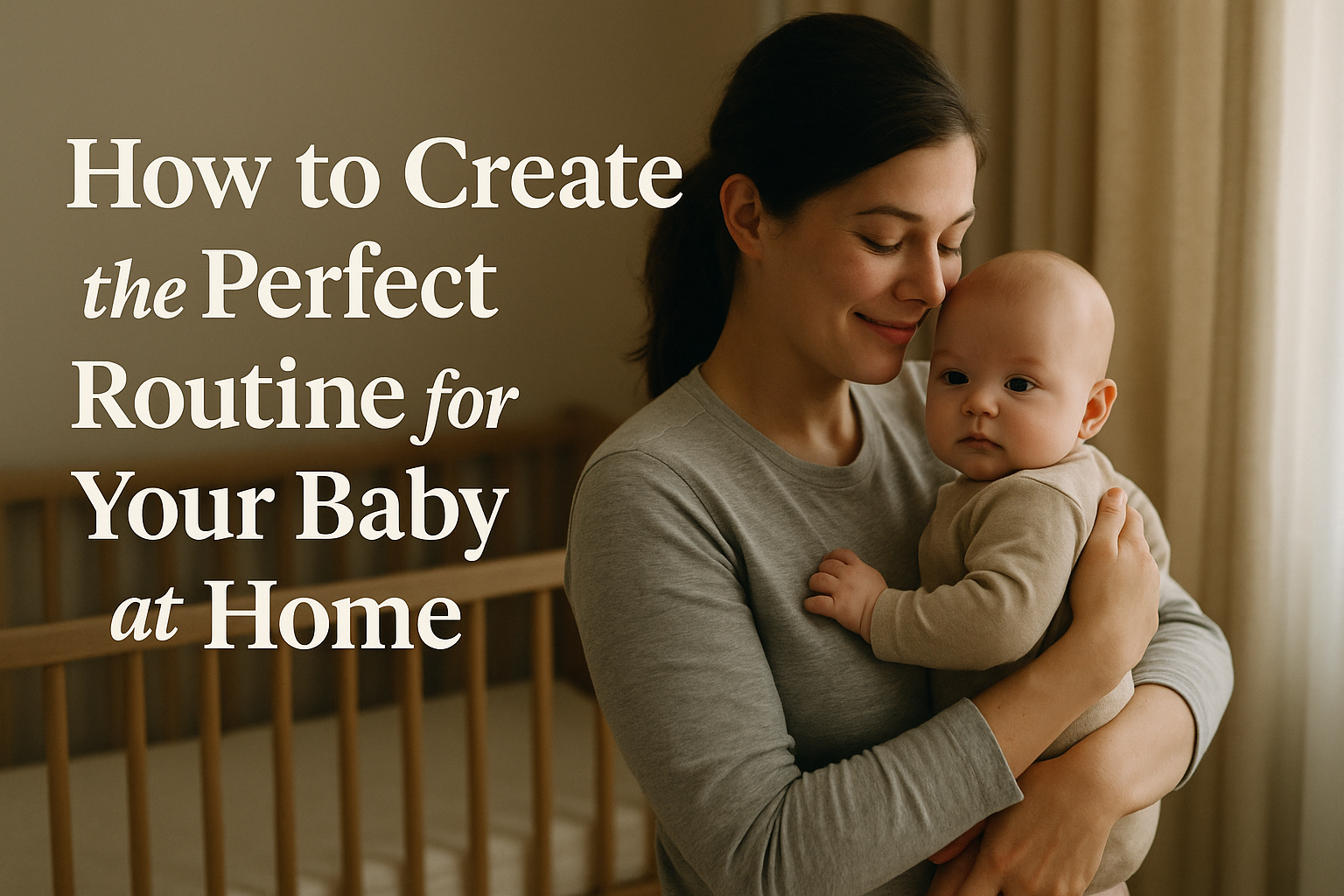One of the most common questions new parents ask is: “Should my baby be on a schedule?” The answer isn’t one-size-fits-all—but building a flexible, comforting routine can help your baby feel safe, sleep better, and develop healthy habits early on.
Let’s explore how to create a baby routine that works for your home, your baby, and your lifestyle.
Why Routines Matter for Babies
Babies thrive on predictability. While they can’t tell time, they respond to consistent patterns of behavior.
A well-structured routine:
- Reduces stress (for both baby and parents)
- Helps regulate sleep and feeding patterns
- Builds trust and emotional security
- Encourages development and learning
Even simple routines—like a consistent bedtime process—can create powerful signals for your baby’s brain.
Understand Your Baby’s Natural Rhythms
Before creating a routine, spend a few days observing your baby. Note when they:
- Seem sleepy
- Get hungry
- Are most alert
- Cry or fuss
Your baby already follows a biological rhythm. Your goal is to gently shape a routine around those natural patterns, not force a rigid schedule.
Start Small: The Bedtime Routine
Bedtime is the best place to start building structure. Babies benefit from wind-down cues that signal it’s time to sleep.
A good bedtime routine might include:
- A warm bath
- A gentle baby massage
- Soft lullabies or white noise
- A story or soft talking
- Dimming the lights
- Feeding and cuddles before sleep
Consistency is more important than timing. Try to repeat the same steps in the same order each night.
Establish a Feeding Routine
Newborns eat frequently—usually every 2–3 hours. As they grow, feedings space out. Over time, your baby will begin to settle into a feeding rhythm.
Tips for success:
- Watch for hunger cues (rooting, sucking on hands) instead of just the clock
- Don’t delay feedings too long to stick to a “perfect” schedule
- Keep nighttime feedings calm and quiet, to avoid overstimulation
- As your baby grows, align feedings with sleep and wake cycles
Eventually, you’ll notice a flow emerging around feeding and sleeping.
Create a Nap Routine
Naps are essential for baby development—and for your sanity. Though the timing will vary based on age, consistent nap routines help babies fall asleep faster and stay asleep longer.
Your nap routine can be short, such as:
- Diaper change
- Dim lights
- Soft music or shushing
- Rocking or holding until drowsy
Tip: Put your baby down when they are drowsy but awake to help them learn to fall asleep on their own.
Use Morning and Evening Anchors
In the early stages, babies won’t have a rigid schedule, but you can anchor the day with two predictable moments:
- Morning Routine
- Open the curtains
- Feed your baby
- Play or tummy time
- A short walk outside
- Evening Routine
- Wind-down activities
- Bath or warm wash
- Bedtime feed
- Cuddles and lullabies
These bookends help your baby begin to understand day vs. night, which supports better sleep over time.
Stay Flexible in the Early Months
It’s easy to feel pressure to follow strict schedules from books or online sources. But babies under 4–6 months are still developing their internal clocks.
During this period:
- Aim for routines, not rigid schedules
- Be responsive rather than clock-focused
- Expect changes during growth spurts and developmental leaps
What worked last week may not work this week—and that’s completely normal.
Include Play and Interaction Time
A good routine isn’t just about sleep and feeding—it’s about connection.
Daily bonding moments should include:
- Tummy time to build motor skills
- Face-to-face interaction
- Storytime or singing
- Gentle baby stretches
- Outdoor walks (sunlight helps regulate circadian rhythm)
These moments not only support development but strengthen your bond.
Track and Adjust As You Go
Keep a simple log of naps, feedings, and wake times for a few weeks. Patterns will start to emerge.
Use your notes to:
- Adjust nap windows
- Time feedings more smoothly
- Avoid overstimulation or overtiredness
Remember: it’s okay to tweak things! The best routine is the one that works for you and your baby.
Include Time for Yourself
Don’t forget that your well-being matters too. A healthy routine includes time for you to:
- Shower
- Rest (even 15 minutes of quiet can help)
- Eat nourishing meals
- Connect with a friend or loved one
When your needs are met, you’re better able to meet your baby’s needs.
Routines Bring Peace to the Chaos
There’s no perfect routine—only the one that brings rhythm, comfort, and connection to your family life. The goal isn’t control; it’s consistency with flexibility.
Over time, your baby will respond to these patterns with confidence and calm, giving both of you more stability.
Start simple. Adjust when needed. Trust the process.
You’re building something beautiful—one moment at a time.
